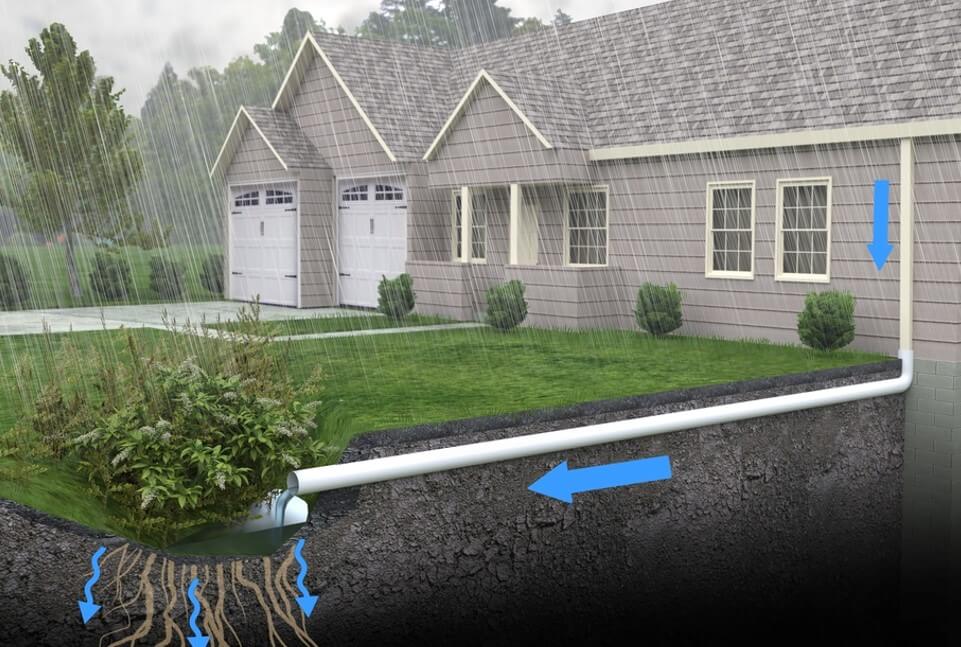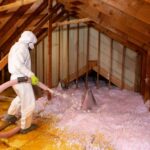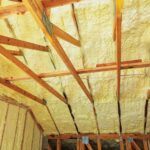When it comes to designing a roof, one might wonder about the importance of roof slope for drainage. Many homeowners often overlook the crucial role that the roof slope plays in ensuring effective drainage. A well-designed roof slope not only enhances the aesthetic appeal of a building but also serves as a critical component in directing water away from the structure. This, in turn, helps prevent water damage and increases the lifespan of the roof.

Why is Roof Slope Important?
A roof’s slope, also known as its pitch, is fundamental in ensuring that water drains off efficiently. Without the proper slope, water can accumulate, leading to leaks, structural damage, and even mold growth. Hence, understanding the importance of roof slope for drainage is vital for maintaining the integrity of your home.
The Science Behind Roof Slope
The slope of a roof is measured by the vertical rise over a horizontal run. This measurement is crucial because it determines how quickly water can be shed off the roof. A steeper slope facilitates faster water drainage, reducing the risk of water pooling and associated damage.
Types of Roof Slopes
There are various types of roof slopes, each serving different purposes:
- Flat Roofs: While they appear flat, they usually have a slight slope to aid in drainage. They are prevalent in commercial buildings.
- Low Slope Roofs: These have a gentle slope and are often used in residential buildings. They require special attention to drainage systems to prevent water accumulation.
- Steep Slope Roofs: These are common in areas with heavy rainfall or snow, as they allow for efficient water and snow runoff.
Benefits of Proper Roof Slope
Having the appropriate roof slope offers numerous advantages:
- Enhanced Water Drainage: A well-designed slope ensures that water is quickly directed away from the roof, preventing potential leaks and damage.
- Increased Roof Longevity: By minimizing water accumulation, the risk of structural damage is significantly reduced, extending the roof’s lifespan.
- Improved Energy Efficiency: Proper drainage contributes to better insulation, maintaining the building’s temperature and reducing energy costs.
Common Mistakes in Roof Slope Design
Designing a roof with the correct slope is crucial, but mistakes can occur. Some common errors include:
- Insufficient Slope: A roof with an inadequate slope can lead to water pooling and increased risk of leaks.
- Poor Drainage Systems: Without an effective drainage system, even a well-sloped roof can fail to manage water effectively.
- Ignoring Local Climate: Not considering the local weather conditions can result in a slope that cannot handle the area’s typical rainfall or snow.
Enhancing Roof Slope for Better Drainage
Improving your roof’s slope involves considering several factors:
Material Selection
Choosing the right materials can significantly impact the effectiveness of your roof’s drainage. Materials like metal and asphalt shingles are known for their durability and ability to facilitate water runoff.
Professional Inspection
Regular roof inspections by professionals can identify potential slope issues early. This can help in making timely adjustments to prevent future drainage problems. For a detailed checklist, refer to this roof inspection guide.
Consulting with Experts
Engaging with roofing experts can provide insights into designing a slope that meets your specific needs. They can offer tailored solutions based on your home’s location, structure, and climate.
Innovative Roof Drainage Solutions
Besides adjusting the slope, incorporating innovative drainage solutions can enhance water management. Systems like gutters, downspouts, and drains play a crucial role. Learn about some roof drainage solutions for various building types.
Gutter and Downspout Placement
Proper placement of gutters and downspouts is essential for effective drainage. They should be strategically positioned to catch and direct water away from the foundation of the building.
Regular Maintenance
Ensuring that your drainage system is free from debris is vital. Regular cleaning and maintenance can prevent clogs and ensure that water flows smoothly. For some DIY tips, check out these downspout repair tips.
Conclusion
Understanding the importance of roof slope for drainage is crucial for homeowners looking to protect their investment. A well-designed roof not only enhances the aesthetic value of your home but also ensures that it remains structurally sound for years to come. By paying attention to the slope and implementing effective drainage systems, you can safeguard your home against potential water damage and enjoy peace of mind.
For more information on residential roof drainage solutions, you might find this external resource helpful.

FAQs
What is the ideal roof slope for drainage?
The ideal slope depends on the climate and the roofing material. However, a slope of at least 1/4 inch per foot is generally recommended for effective drainage.
Can a flat roof have good drainage?
Yes, flat roofs can have good drainage if they are designed with a slight slope and equipped with effective drainage systems like scuppers and internal drains.
How often should I inspect my roof’s slope?
It’s advisable to inspect your roof at least once a year, or after significant weather events, to ensure that the slope and drainage systems are functioning correctly.
This article contains affiliate links. We may earn a commission at no extra cost to you.







